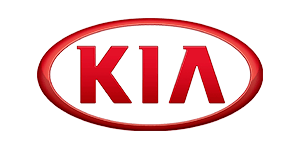- เรื่องราวความสำเร็จของลูกค้า
- Kia Motors America

Manufacturing smarter, safer vehicles with analytics

With SAS, Kia improves quality and better serves customers.

No. 1
mass-market brand in initial quality
Kia achieved this using • SAS® Visual Analytics • SAS® Office Analytics • SAS® AI solutions
Kia Motors America relies on advanced analytics and artificial intelligence solutions from SAS to improve its products, services and customer satisfaction
Vehicles have become safer over the years thanks to innovations like automatic emergency braking and blind-spot monitoring. According to the American Automobile Association (AAA), advanced driver assistance systems have the potential to prevent nearly 9,500 traffic deaths a year in the US alone. And while engineers continue to churn out new technologies to make driving safer, one automaker is using advanced analytics and artificial intelligence (AI) to take safety and quality to a new level.
For the fifth consecutive year, Kia Motors is the top-rated mass-market brand according to the J.D. Power Initial Quality Study. The automotive manufacturer maintains its relentless focus on excellence with the help of SAS® solutions.
SAS gives us a huge advantage. Without it, we’d have to wait years to see durability failures and understand their impact in terms of customer satisfaction and warranty costs. John Thornton Kia Motors America
A better maintenance experience
John Thornton is a manager in Kia’s Legal Division. Following a stint in the military, where he tested tanks, Thornton transitioned to the automotive industry, where his experience using data science to improve vehicle quality and safety was a natural fit.
When Thornton joined Kia a decade ago, he immediately saw an opportunity to boost performance with better analytics. With Thornton’s backing, Kia invested in a suite of SAS solutions and today uses advanced analytics for multiple initiatives aimed at improving Kia’s products and services.
Kia’s Techline is a good example. Whenever a Kia dealership technician sees a new issue or has difficulty diagnosing a problem, they can call the internal Technical Assistance Hotline for assistance. Kia saw this as an opportunity to gather information and create a report that visualizes the group and individual agents’ performances. Thus, the Techline report was born.
Before SAS, the Techline report took Thornton a couple days to create – a tedious process that involved combining data from a CRM system, phone records and survey responses. Using SAS Visual Analytics, he was able to automate the report and reduce production time to just 30 minutes. Faster access to information not only helps Techline agents provide a better experience for Kia technicians and customers at the dealership, but it also gives managers clear visibility into agent performance, paving the way for mentoring and improving the overall service experience.
As Thornton tells this story, he reflects on a similar project where he slashed the production time of a recall campaign dashboard from eight weeks to one day. “SAS Visual Analytics is so easy to use. Very little time is required to design and publish a report.”
Predicting part failures improves safety
Another key focus area for Thornton is quality. Like every car manufacturer, Kia is driven to improve quality and reduce warranty costs by predicting part failures. Weibull Analysis is a common analysis technique that allows manufacturers to plot, early on, the failure rate for every part and project those failure rates into the future.
Due to the sheer number of parts across numerous models and model years, this sort of calculation is impossible to do manually. Thornton uses advanced analytics to automatically perform the Weibull Analysis for each part. The process starts by ingesting data from warranty claims and sales, and then plots failure rates over time versus mileage – a procedure that linearizes part failures and extrapolates them into the future using a regression line.
This insight enables Kia to forecast failure rates and maintenance costs through the warranty period of each vehicle and minimize that amount by intervening with design changes, less costly repairs and new service processes. It also helps the company optimize its warranty reserves. “SAS gives us a huge advantage,” Thornton says. “Without it, we’d have to wait years to see durability failures and understand their impact in terms of customer satisfaction and warranty costs.”
He now creates both a summary report and a Weibull Analysis for all parts in just a few clicks. “The SAS automation capability is unique,” Thornton says. “There aren't any other products I know of that can automate the Weibull Analysis across all car lines and model years in one batch process.”
Kia takes quality analysis a step further by analyzing part performance by manufacturing date. By comparing failure rates on vehicles manufactured in August versus September, for example, Kia can make manufacturing adjustments to continuously improve product quality. Doing this requires “normalizing” the data – a process Thornton does with SAS to account for things like a vehicle’s time in service, sales figures and other manufacturing data.
“These are just two examples our how our platform is very capable to perform analytics on a lot of different models and parts and show us how different parts are performing,” Thornton says. “It’s just incredible. And it's critical to manufacturers like us.”
Kia Motors America – Facts & Figures
Irvine, CA
headquarters
800
dealerships nationally
8.6 million
vehicles sold in the US
AI deciphers meaning in customer feedback
Customer input provides a gold mine of insight that can help manufacturers improve products. Kia receives feedback on its growing fleet of sedans, SUVs and minivans through vehicle owner questionnaire responses collected by the National Highway Traffic Safety Administration.
But deciphering feedback from this cross-section of people can be difficult. Responses vary in intelligibility and can include statements about multiple items, triggering the need for advanced technology to derive value from the survey answers. “It’s very challenging to have a program read all that text and identify the concern with a high degree of accuracy,” Thornton explains.
Kia uses advanced analytics from SAS to decipher meaning from customer input. The tool applies natural language processing – a form of AI – to make sense of the feedback. The model automatically categorizes and extracts the complaint type in each response, enabling Kia to uncover quality issues and address them in the design and manufacturing process for existing and future vehicles.
Furthermore, by fully digesting customer feedback, Kia can proactively alert dealers to future maintenance issues and help them optimize repairs. By having this foresight, Kia improves its service efficiency while simultaneously giving customers a smooth maintenance experience.
The projects described in this story offer a glimpse into Kia’s new standard of excellence – an ongoing evolution transforming the automaker from a value brand into a model of quality. Analytics has provided fuel for change, according to Thornton. “Bringing in SAS has given us a lot of capability we wouldn’t have otherwise had, and we’re incredibly pleased with the results.”
